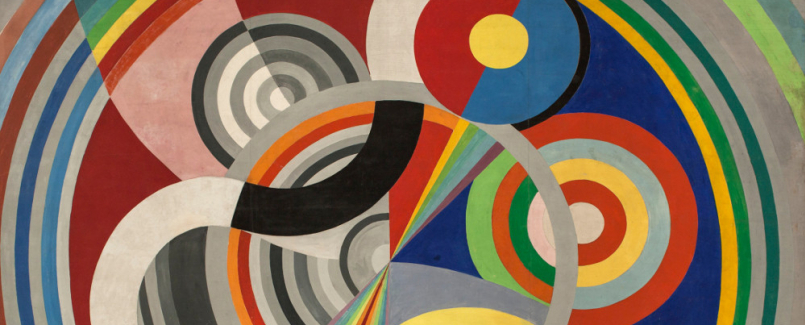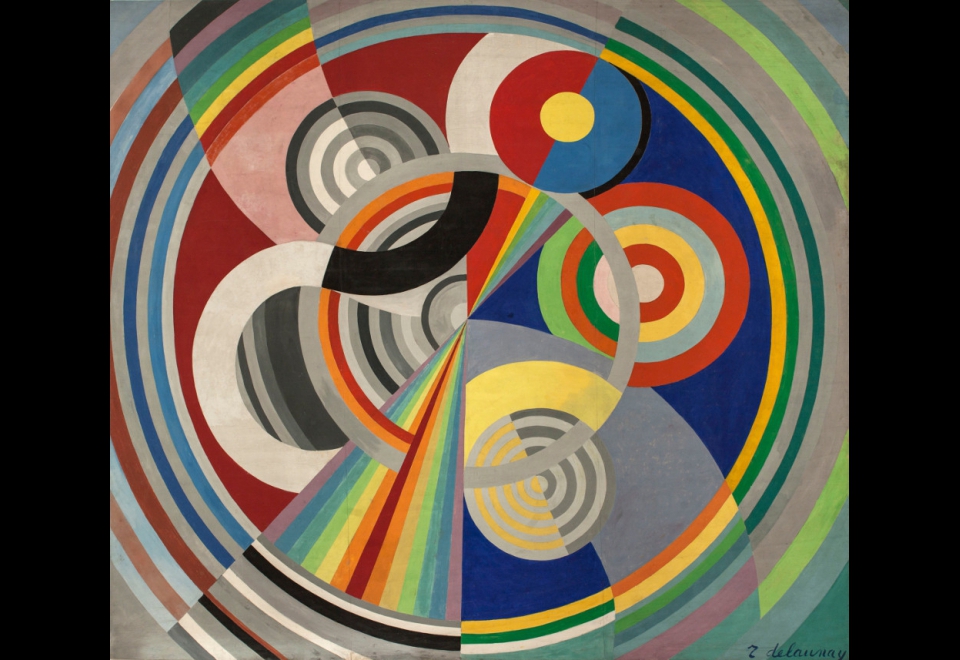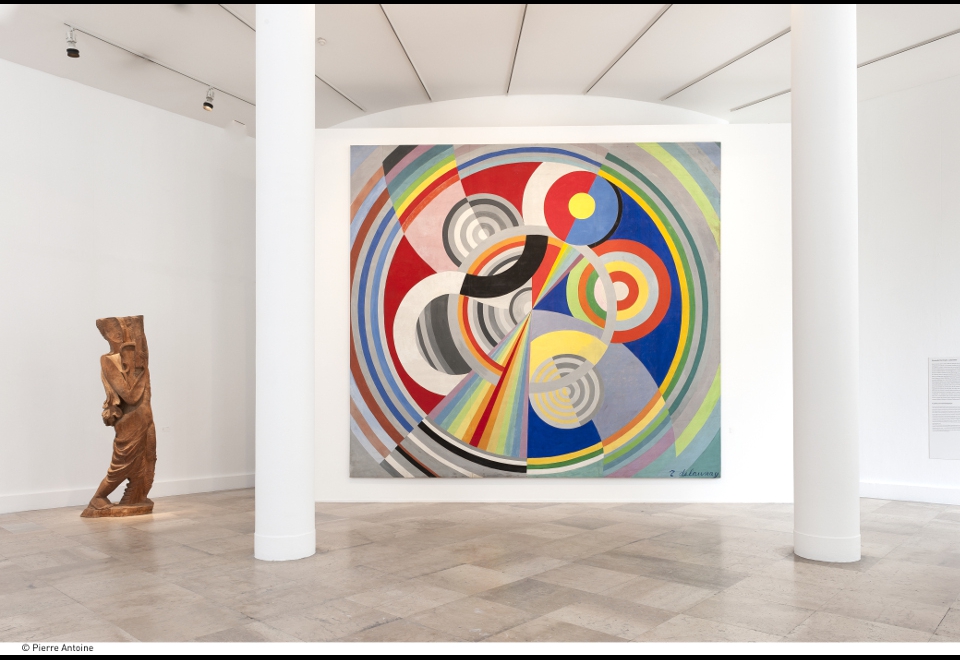Rythme n°1 Robert Delaunay

Inspired by the work of certain colour theoreticians (Michel-Eugène Chevreul, Ogden Rood), Delaunay pursued the idea of painting based on the law of simultaneous and successive colour contrast. That was before the First World War. This particular kind of Cubism, which Apollinaire dubbed Orphism, produced an illusion of movement and was suited to the representation of a modern world in full flight: the Eiffel Tower, revolving aeroplane propellers, sport, and so on.
In 1930, Delaunay reconnected with “non-objective art” in his Rhythmes and Rhythmes sans fin. In these paintings, colour alone is the expressive element; its organisation, its dimension and its spatial relationships are what determine the rhythms of the shapes. Many artists received commissions for the 1937 International Exposition. Delaunay, encouraged by his wife Sonia Terk’s activity as a painter and maker of “integrated” furniture and fabrics, had been thinking for some time about abandoning easel painting in favour of an art that would find its way into all the spaces of daily life. Delaunay was asked to collaborate with architect Félix Aublet on a large ensemble of decorations for the Pavillon des Chemins de Fer and the Pavillon de l’Air et de l’Aéronautique. Their work achieved great success with the public.
The following year, Albert Gleizes, Jacques Villon, André Lhote, and Sonia and Robert Delaunay were commissioned to paint huge canvases for the sculpture hall at the Salon des Tuileries. These paintings were exhibited in 1939 at the Groupe des Réalités Nouvelles exhibition (accepted as the first Salon d’Art Abstrait), at the Galerie Charpentier. They were then donated to the City of Paris. The dynamic possibilities of coloured discs entering into movement by the mere physical action of looking at them were exploited to give the composition rhythm. By a “synchromic” effect, one’s vision is activated by an interplay of curves and counter-curves, discs with concentric circles of various thicknesses which act against each other, and above all by contrasting complementary colours (red/green, blue/orange) and discordant colours (red/blue; pink/red, and so on). These canvases – the Museum also possesses the maquettes for them – were the culmination of Delaunay’s research before his untimely death in 1941.

Rythme n° 1
Oil on canvas
Permanent collections, room 1
Musée d'Art moderne de la Ville de Paris
© Musée d'Art Moderne / Roger-Viollet

Rythme n°1 , Robert Delaunay
Permanent collections of Musée d’Art moderne de la Ville de Paris (2013)
Photographe Pierre Antoine

